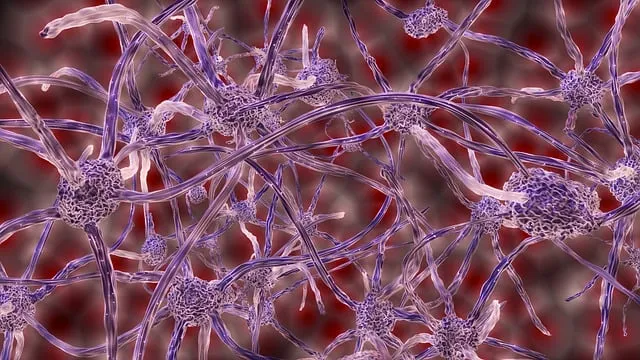The internal link structure is a vital SEO component that boosts website visibility and user experience. By strategically connecting relevant pages, it acts as a navigation aid for users and search engines, facilitating easier access to content. Optimizing this structure provides context for visitors, enhances site performance through "link juice" transfer, and supports both user engagement and SEO algorithms. A well-designed internal link network, using hierarchical systems, keyword-rich anchor text, and logical connections, improves navigation, ensures content focus, and promotes equal distribution of link equity. Technical SEO specialists leverage tools for analysis, structural audits, and detailed sitemaps to create optimal structures, enhancing crawlability and signaling search engines which content is most valuable. Case studies demonstrate the success of scalable internal link strategies in improving user experience and search engine rankings.
In today’s competitive digital landscape, optimizing internal linking is no longer an option but a necessity for technical SEO specialists. Effective internal link structures not only enhance user experience but also play a pivotal role in driving organic traffic and improving search engine rankings. This article explores scalable methods of internal linking, delving into strategies that can transform your website’s architecture. From understanding the fundamentals to leveraging advanced tools and analyzing real-world case studies, we provide a comprehensive guide on crafting robust internal link networks.
- Understanding Internal Linking: The Cornerstone of SEO
- Unlocking Scalability: Efficient Internal Link Structure Strategies
- Key Considerations for Building a Robust Internal Link Network
- Best Practices for Optimizing Internal Links for Search Engines
- Tools and Techniques to Analyze and Improve Your Internal Linking
- Case Studies: Real-World Success Stories of Scalable Internal Link Structures
Understanding Internal Linking: The Cornerstone of SEO

Internal linking is a fundamental component of search engine optimization (SEO) that often goes unnoticed yet plays a pivotal role in enhancing website visibility and user experience. At its core, internal link structure involves strategically connecting relevant pages within your website to one another. This intricate web of links acts as a roadmap for both users and search engines, guiding them through the site’s content and facilitating easier navigation.
By implementing effective internal link structure tips, you can optimize your site for SEO while providing valuable context for your visitors. Well-crafted internal links not only direct users to relevant content but also carry authority and “link juice” from one page to another, boosting overall website performance. When structuring internal links, consider the relevance of anchor text, the hierarchy of pages, and the user’s natural browsing patterns. These factors contribute to a robust internal link structure optimization strategy that supports both search engine algorithms and user engagement.
Unlocking Scalability: Efficient Internal Link Structure Strategies

In today’s digital landscape, a robust internal link structure is vital for any website aiming to rank high in search engine results pages (SERPs). Unlocking scalability in your internal linking strategy means creating a seamless network of connections that not only enhances user experience but also signals to search engines the importance and relevance of your content. One efficient method involves implementing a hierarchical structure, where top-level pages act as anchors, connecting to relevant subpages and category pages below them. This ‘silo’ approach ensures each page has a clear focus, making it easier for both users and search algorithms to navigate through your content.
By optimizing your internal link structure, you can achieve better distribution of link equity, where the value passed between links is evenly dispersed across your site. Tips include using anchor text that accurately represents the target page’s content, keeping link density balanced across pages, and ensuring a logical flow of connections. An internal link structure tutorial might guide specialists through these practices, demonstrating how to create a structured framework that supports both accessibility and optimization—a game-changer for any SEO strategy focused on internal linking optimization.
Key Considerations for Building a Robust Internal Link Network

Building a robust internal link network is paramount for any technical SEO specialist aiming for scalability. The first key consideration is to understand your site’s architecture and identify areas where strategic linking can enhance user experience and search engine visibility. A well-structured internal link structure should mirror the information hierarchy of your website, making it easy for both users and search algorithms to navigate through relevant content.
A comprehensive internal link structure optimization strategy involves analyzing page importance, identifying keyword-rich anchor text, and ensuring a logical flow of links across pages. By integrating internal linking seamlessly into your site’s navigation, you not only improve crawlability but also create a valuable network that supports content discovery and authority distribution. This approach, coupled with an internal link structure tutorial that guides the implementation process, can significantly boost your website’s SEO performance in the long run.
Best Practices for Optimizing Internal Links for Search Engines

To optimize internal links for search engines effectively, consider a structured and strategic approach. An internal link structure that is intuitive and well-organized helps both users and search engine crawlers navigate your website seamlessly. Start by identifying key pages based on relevance and importance, ensuring these are interconnected through a logical hierarchy. This not only improves user experience but also signals to search engines which content is most valuable.
Implement internal link structure tips such as using descriptive anchor text that accurately represents the linked page’s content. Avoid vague or overly generic terms; instead, use specific keywords that reflect the page’s focus. Additionally, vary link placement within your content to create a natural flow. Incorporate internal links in headings, within paragraphs, and even within related media to enhance internal link structure optimization. This strategic approach ensures your website is not just crawlable but also ranked higher for relevant search queries.
Tools and Techniques to Analyze and Improve Your Internal Linking

Technical SEO specialists constantly seek efficient methods to optimize their website’s internal linking—a crucial aspect of improving search engine visibility and user experience. The first step in this process involves utilizing advanced tools designed for comprehensive analysis. These tools enable experts to examine the current internal link structure, identify weaknesses, and uncover opportunities for improvement. By gaining insights from these analyses, specialists can make data-driven decisions that enhance overall SEO performance.
Effective techniques include employing structural audits to assess link hierarchies, ensuring a logical flow of information, and identifying broken links that negatively impact user navigation. Additionally, creating detailed sitemaps helps organize content and makes it easier for search engines to crawl and index pages efficiently. An optimal internal link structure tutorial suggests using anchor text strategically, focusing on relevant keywords, and maintaining a balance between direct links and contextual ones. These strategies contribute to improved SEO while fostering a seamless user journey across the website.
Case Studies: Real-World Success Stories of Scalable Internal Link Structures

In the realm of technical SEO, case studies offer tangible evidence of successful strategies, and scalable internal link structures are no exception. Real-world examples demonstrate how businesses have optimized their websites by implementing efficient internal linking, resulting in improved user experience and search engine visibility. For instance, a leading e-commerce platform enhanced its site’s performance by adopting a hierarchical internal link strategy, organizing content into logical categories and subcategories. This approach not only facilitated navigation for users but also allowed search engines to crawl and index the site more effectively.
These case studies provide valuable insights for SEO specialists seeking to refine their internal link structure tutorial or strategy. By analyzing successful implementations, professionals can gather tips and best practices, such as employing anchor text variation, ensuring a balanced distribution of link juice, and maintaining a user-friendly navigation architecture. Adopting these strategies can lead to significant improvements in website scalability, content discoverability, and overall search engine optimization.
